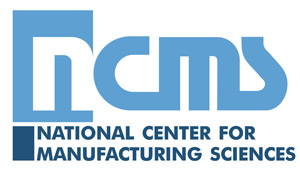New Tool Monitors Maintainers’ Health and Safety in Confined Spaces
Insufficient oxygen supply, flammable or explosive atmospheres, and toxic gases are just a few of the hazards that maintainers could encounter while working in confined spaces. Because many atmospheric hazards are not detectable by sight or smell, technological innovations that detect and mitigate threats to maintainers’ safety are both necessary and valuable.
To provide this vital technology, NCMS launched a collaboration in 2020 to develop and demonstrate a confined spaces monitoring system (CSMS). The collaboration—a team comprised of NAVSEA, Portsmouth Naval Shipyard (PNSY), and industry partner Aptima—is creating a wearable CSMS. This unit will provide real-time sensing and assessment of maintainers’ health, and their surrounding environment, as they operate in confined spaces and other potentially hazardous areas. The CSMS will increase maintainer safety and reduce the time, costs, and manpower required by current confined space monitoring practices.
This capability also has applicability for any maintainer working in confined spaces such as tanks, voids, and pipes. Maintenance technicians in the public and private sectors can also benefit from this advanced technology, across a myriad of industries such as mining, underground utilities installation and repair, construction, and excavation.
“Before this project, there was some technology involved in monitoring confined spaces,” says Dr. John Feeney, Principal Research Engineer at Aptima. “For example, gas sampling would be used to make sure there was an acceptable level of oxygen and carbon dioxide, while ensuring hazards such as hydrogen sulfide were not present. There was also a ‘tank watch’ where someone would verbally check in with the worker in the confined space, every 15 minutes. The way our system is different is that we’re embedding technology with the maintainers going into the space that measures their physiology (heart rate, respiration, etc.) as well as their environment so we have continuous data about the person, their activities, and the atmosphere around them.”
In the project’s first phase, the team performed a baseline test and evaluation of the CSMS at PNSY. During Phase II, the team is producing the wearable monitoring system, focusing on developing four key components: sensors, situation awareness displays, data networking, and alerting for safety interventions.
“Aptima is supporting the development of sensors, by working with partners to design sensors that are suited to the needs of confined space monitoring,” explains Feeney.
These sensors will collect environmental, physiological, and location data. For environmental monitoring, the collaborators will apply an emerging sensor technology in a wearable form, with multi-gas detection capability. To assess workers’ physiological condition, an unobtrusive wearable sensor is being developed that maintains adequate skin contact to assess heart rate, respiration, posture, positions, and more. This sensor will indicate when workers are trending towards life-threatening conditions. The CSMS location services will pinpoint workers in confined spaces, ensuring faster response times if an emergency arises.
A new process for monitoring workers will transmit the collected data to other staff via secure, Navy-approved computing hardware and communications technology. Rather than having standby attendants located near each confined space, the shipyard is looking to implement remote monitoring of multiple personnel in several confined spaces. To achieve this goal, the team will develop situational awareness displays at decision support stations staffed by a new position: the “remote safety attendant” (RSA). The RSA will be responsible for tracking workers’ physiological conditions and locations, monitoring the atmospheric sensors to detect environmental hazards, and initiating timely interventions when necessary.
Aptima will work to establish robust, reliable, and secure data communication that will propagate signals from within the confined space out to the remote monitoring station, encrypt communications, and ensure that all system components meet or exceed cybersecurity requirements.
Finally, a library of alerts derived from the sensors’ data will be developed to meet the benchmarks established by shipyard safety personnel. The introduction of the CSMS sensing and monitoring capabilities enables a tiered alert response, including a new dimension for preventative measures that has not previously been possible.
“The CSMS [will] increase maintenance workers’ safety, by orders of magnitude—now the response time is down to seconds, rather than minutes,” says Feeney. “Also, the CSMS will enable a better utilization of personnel, which will ultimately improve timelines for repairs and maintenance in general.”
The current phase of the project is scheduled to wrap up in October 2022, and the eventual goal is to implement the CSMS in all US Navy shipyards.
“Maintainers who work in confined spaces are doing hard, grueling work, and the fact that this project can increase their safety, their comfort level, and that we know people are coming home to their families at the end of their shift, that’s really rewarding,” says Feeney.
